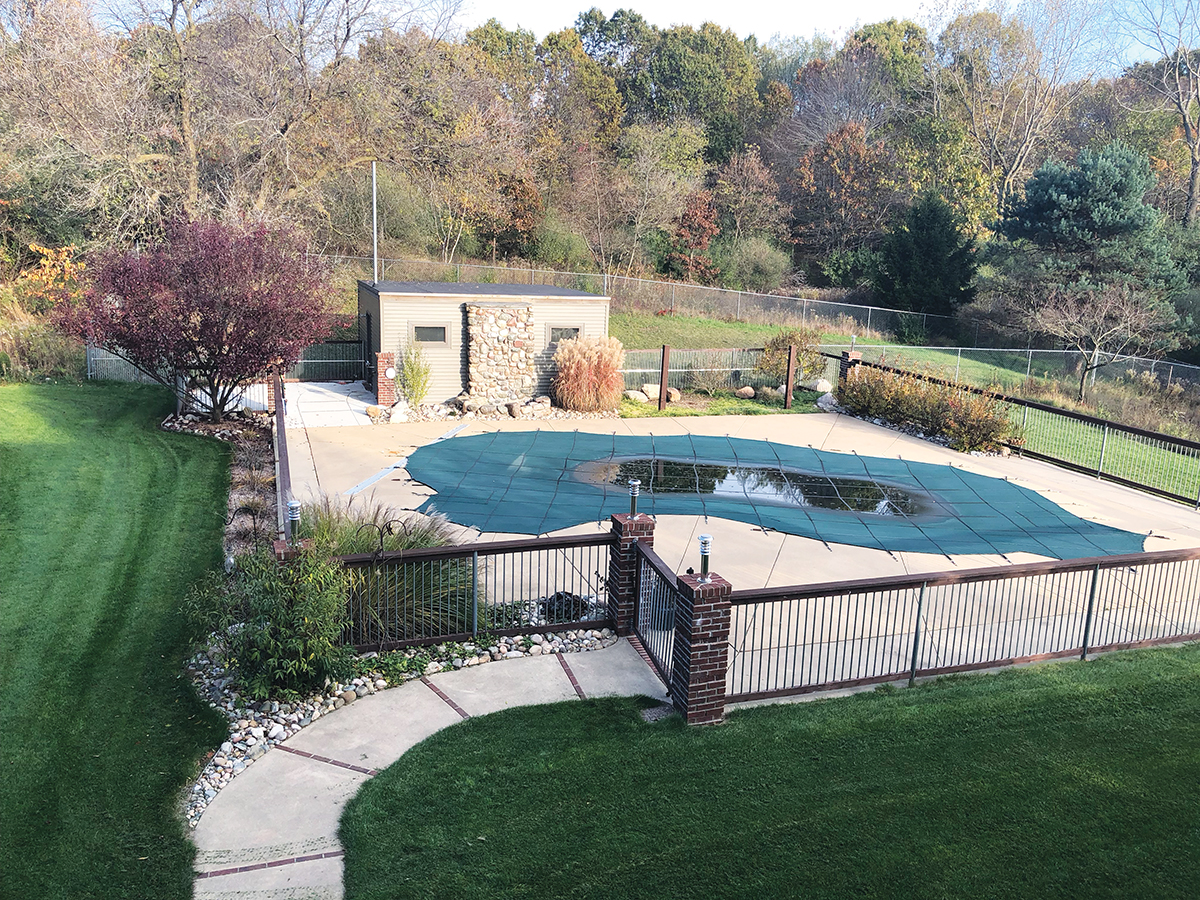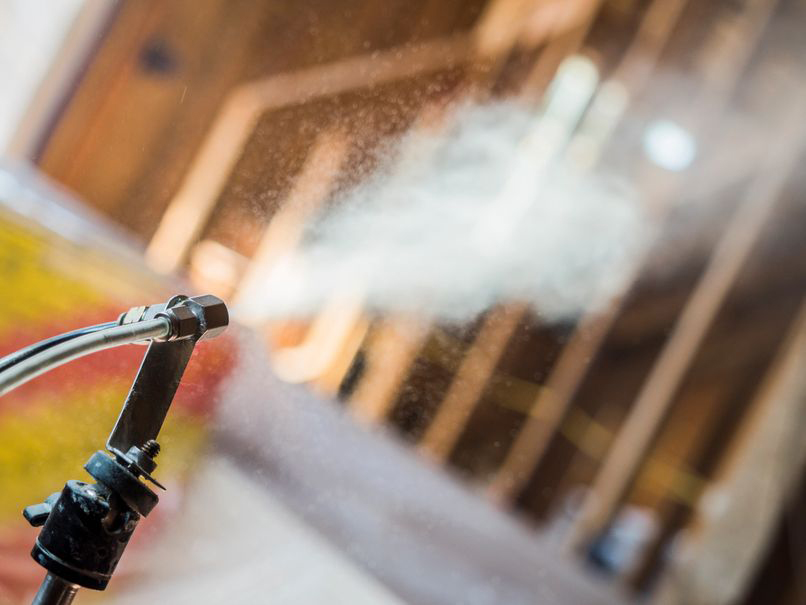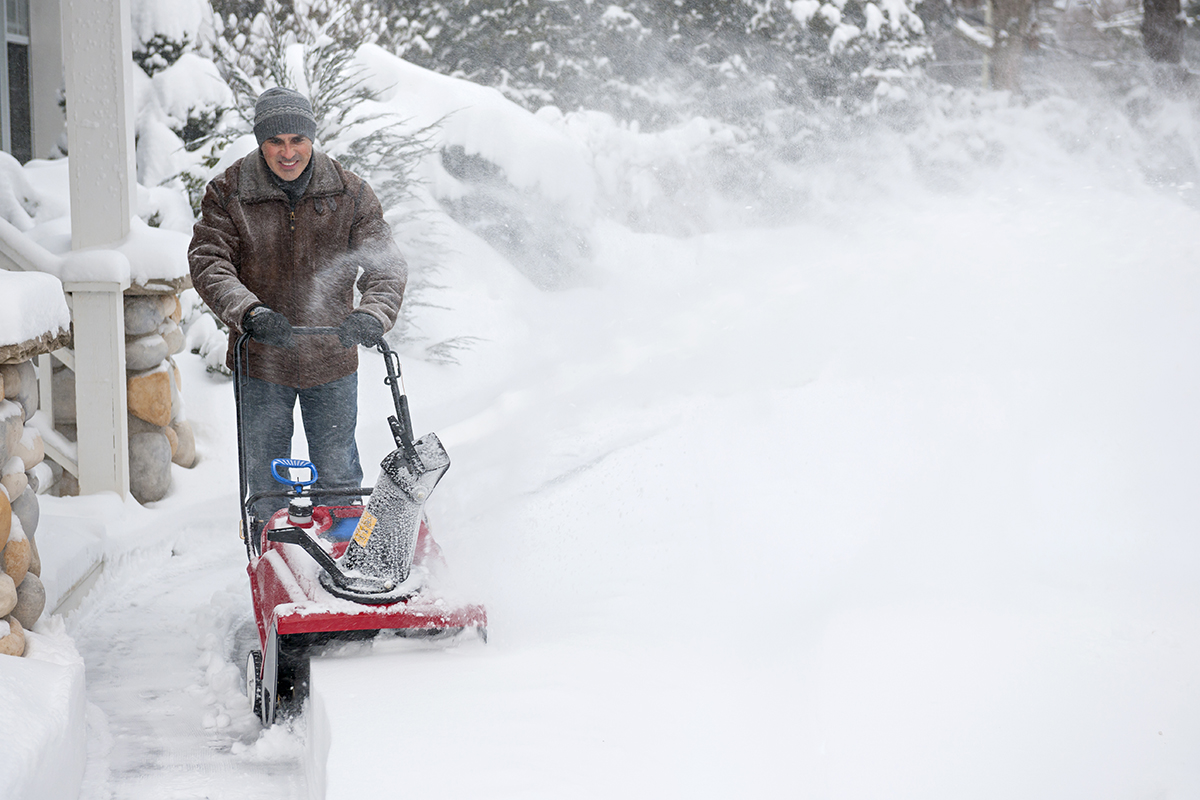WRITER | KYLIE TORRES
PHOTO | SIRENA POOL AND SPA
As Michiganders, we all have a love-hate relationship with winter. Although the season comes with winter sports and beautiful views, it also comes with chores. Don’t let closing your in-ground pool be one you ignore!
Water Table
The first thing to understand before closing your pool is the depth of your water table. How deep would you have to dig to reach water? Do you know if you have a high water table or not?
If the water table is high and you are advised to leave water in the pool, you’ll need duck plugs so that when you blow out your lines, the water does not return into them. If your water table is low and it is safe to do so, you’ll want to drain your pool to just below your return lines. This will keep your water lines from freezing and bursting.
Covers
Next, you need to think about how you will cover your pool over the winter.
High-shade mesh safety covers are the best option for most pools, especially if you have a concrete deck. These covers are installed into the deck itself and are safe to walk on. Leaves blow over them and snow melts through them. These reasons make this the lowest maintenance and safest cover.
Tarp covers with water tubes are the tried and true classic. However, these covers are more cumbersome to set up and to remove. They are not safe to walk on, so be sure to keep kids and animals away – even when it freezes over in the winter!
Some people use their automatic pool cover as a winter cover. Although this can be a good solution in a pinch, it is not recommended as a long-term solution due to the volume of snow we get. The snow on the cover can cause extra wear, resulting in the need for an early replacement of cover components. If you decide to use your automatic cover in winter, we recommend shoveling it off periodically.
Checklist
Every pool is unique, so specifics differ. You can use this general checklist to ensure you don’t miss a step.
1. Drain your pool to just below the return lines, if safe to do so with your water table.
2. Blow out all water lines.
3. Fit all openings with plugs.
4. Add winter chemicals; check with your pool center for the correct mix for your pool.
5. Place your cover on the pool.
During the winter
Be sure to check on your cover during the winter as it may sustain damage during a storm. If this happens, call a pool professional for help.
You should also consider hiring a pool professional to walk you through closing your pool for the first time. With proper care, your pool will be ready to go in the spring.








